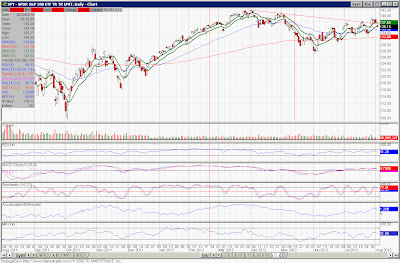I previously posted an update on the trend of the XAU and the standard deviation of the price of gold relative to money supply.. pasted below
----------------------------------------------------------------------------------------------------------
Either way, I thought it would conducive to update my gold stock timing indicator. This indicator compares the price of the Phily Gold/Silver Sector Index (ticker XAU) to the the standard deviation of the price of gold relative to money supply. Historically, buying opportunities on the XAU (and precious metal stocks in general) present themselves when the standard deviation falls below -1. The below tables show the performance averages of the XUA over a one week period, three months, six months, one year, and two years since 1981.
On average, the performance in subsequent periods following a standard deviation of the price of gold relative to money supply of -1 and -2 far surpasses the respective average buy-and-hold performance. The performance figures appear robust. Just look at the minimum performance seen across all periods. Buying precious metal stocks when the standard deviation falls below -1 reduces your downside potential, at least in a historical context. In addition, the Sharpe ratios (average return divided by standard deviation of the returns) is much improved across all time periods. Here is the data represented graphically.
The current standard deviation is -1.12.
--------------------------------------------------------------------------------------------------------
I have been looking at the price chart of the Market Vectors Gold Miner ETF (ticker GDX) and thought I would update you on what appears to be an interesting set up (full disclosure- I own gold stocks through various mutual funds).
On a long-term basis, the GDX has tested the 2010 lows twice, and despite high volume could not punch through this resistance.
Looking at the yearly chart, you will see flag pattern of higher lows and lower highs since May, indicating the GDX is in a period of consolidation before the next move. And where is the next move heading. I think the recent price performance is telling. Look at the price performance on 8/1. On that day, the GDX changed hands to the tune of 30.7 million shares and was lower on the day. However, the ETF rejected the low (also the near-term resistance levels) and closed near the highs of the day. This is a sign of accumulation. Stock's of gold miners may continue to consolidate, but I believe the majority of the correction is behind us.
----------------------------------------------------------------------------------------------------------
Either way, I thought it would conducive to update my gold stock timing indicator. This indicator compares the price of the Phily Gold/Silver Sector Index (ticker XAU) to the the standard deviation of the price of gold relative to money supply. Historically, buying opportunities on the XAU (and precious metal stocks in general) present themselves when the standard deviation falls below -1. The below tables show the performance averages of the XUA over a one week period, three months, six months, one year, and two years since 1981.
On average, the performance in subsequent periods following a standard deviation of the price of gold relative to money supply of -1 and -2 far surpasses the respective average buy-and-hold performance. The performance figures appear robust. Just look at the minimum performance seen across all periods. Buying precious metal stocks when the standard deviation falls below -1 reduces your downside potential, at least in a historical context. In addition, the Sharpe ratios (average return divided by standard deviation of the returns) is much improved across all time periods. Here is the data represented graphically.
The current standard deviation is -1.12.
--------------------------------------------------------------------------------------------------------
I have been looking at the price chart of the Market Vectors Gold Miner ETF (ticker GDX) and thought I would update you on what appears to be an interesting set up (full disclosure- I own gold stocks through various mutual funds).
On a long-term basis, the GDX has tested the 2010 lows twice, and despite high volume could not punch through this resistance.
Looking at the yearly chart, you will see flag pattern of higher lows and lower highs since May, indicating the GDX is in a period of consolidation before the next move. And where is the next move heading. I think the recent price performance is telling. Look at the price performance on 8/1. On that day, the GDX changed hands to the tune of 30.7 million shares and was lower on the day. However, the ETF rejected the low (also the near-term resistance levels) and closed near the highs of the day. This is a sign of accumulation. Stock's of gold miners may continue to consolidate, but I believe the majority of the correction is behind us.


























